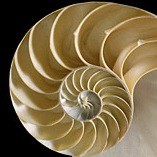This may seem like a small point, but when counting words and letters and extrapolating meanings and possible miraculous connections, it makes a difference because waw can be a word when used by itself to mean “and” (a one-letter “word” like “a” as an article in English), but waw is also a letter when used only to form a word. This makes a great difference, for example, in the usage of waw regarding the Balance Scales, as well as the connection to the genetic code found in Surat Al-Ikhlas. My understanding of this usage is thanks to the work of the Quran researcher (and engineer) Abduldaem Al-Kaheel. But comparing waw as used in the Birmingham manuscript with its use in the same page in a modern typeset mus’haf (written Quran), the difference is clear.
Continue readingQuranic manuscripts
The Quran Constant, a Divine Math-based Text Security System
StandardExtensive studies have been made regarding mathematical miracles, text-number relationships or elements, numerological patterns, structural details, and other aspects of the Quran, but none of these I’ve read is like this article regarding the Quran Constant by Dr. Khaled M. S. Faqih (a professor at Al al-Bayt University in Jordan) in the Journal of Arts and Humanities, which can also be downloaded as a pdf. Essentially, the Quran Constant QC is a number which is key to preserving the text of the Quran from any distortion whatsoever. The author’s expertise in systems analysis gives him the sophisticated mathematics understanding to develop such a constant using the Uthmani manuscript, which is both authenticated (in close relationship to the Birmingham Manuscript) and has been extensively analyzed by a team under the guidance of Dr. Al-Kaheel from which studies the numbers used were derived. Below is a summarizing description of the constant, its major perimeters, and what it does. It is nothing short of miraculous.
Continue readingHistorical East African Quran Manuscripts
Standard(pictured above: the Boné Quran, South Sulawesi, 1804)
We tend to think of the Quran as being mainly produced in the Middle East or Indochinese regions, but Africa has a rich cultural Islamic heritage, as seen in many ways. These manuscripts from coastal East Africa have a unique style both of calligraphy and illumination (where text is presented with flourishes such as borders, calligraphic designs, and illustrations). Although this isn’t the normal subject matter of this blog, I’m recovering from surgery and yet trying to keep to my promise of a daily blog post, or as close to it as I can get.
Repairing Old Copies of the Quran for Ramadan
StandardThis article, Libyans Repair Old Qurans for Ramadan, shows us how economic hard times can sometimes be a boon for the ancient art of repairing what we already have, in this case masahif or copies of the Quran. The word “Quran” actually refers to the message itself, not written copies of it. Because English makes no such distinction, people generally refer to copies of the Quran as “Qurans,” although this is incorrect, a single book/copy being called a mus’haf. It’s a nice distinction, because what counts is not the physical book but the actual message it conveys. On the other hand, without an actual physical book, our ability to study it would be greatly limited. Now with virtual masahif in writing as well as Quran recitation on our phones, the distinction between the “copy” and its “content” becomes even blurrier, since you can’t have the content without a “source” for its transmission, yet what appears on a screen is changeable, somewhat not-quite-physically there. In any case, there are times when reading a physical book has its advantages, like when the power goes out for a significant period of time. Not to forget the beauty of a printed Quran in Arabic. And does anyone else still remember certain memorized parts of the Quran by their placement on the page?
Evidence of Quranic Architecture as Divinely Ordained
StandardAs explained in my Quranic Architecture page as well as Quranic Architecture Summary post, this site presents an entirely new vision of the Quran’s arrangement (order of surahs) and organization (from mid-life in time to edges-of-life closer to timelessness) as forming a spiral correlated to the shape of a chambered nautilus shell, where each surah fits into a separate chamber, naturally descending in size from outer to inner with the final Surah Al-Nass – people – in the center. It shows how the Quran’s message is not randomly arranged but rather forms a surprisingly precise fit in what has become known as an especially beautiful example of sacred geometry found in nature. The discovery of the Birmingham Manuscript pictured above, showing chapter divisions clearly marked and radiocarbon dated to the period of prophet Mohammad’s lifetime, provides physical evidence that this precise arrangement of surahs was indeed sent by Allah the Exalted with the text itself, described with more proofs below.
Continue reading




